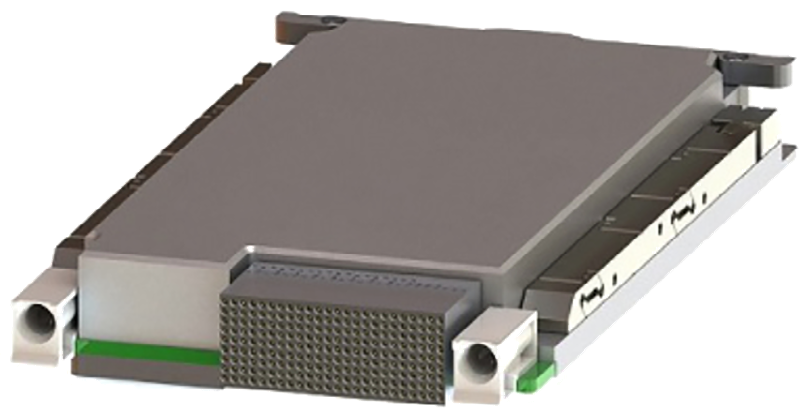Solving big data challenges
In all domains, data capture has become both an enormous opportunity and challenge, as the incorporation of increasingly sophisticated sensors has grown exponentially.

Access to continual, large amounts of new information allows for greater situational awareness, informed decision superiority and capability expansion to fill technology gaps and weaknesses.
The challenge lies in ever smaller platforms moving big data; it must be stored, transmitted, and then leveraged for those opportunities around better decision- making, information dominance, and a seemingly endless list of possible uses.
The importance of storing big data cannot be undervalued, and this rings true for the most global domain: space.
The Data Challenge
Historically, tape and moving parts were enough to meet the criteria necessary to have successful missions. However, those space vehicles were far simpler and required little more than operational health data.
We’ve come a long way since the Sputnik 1 kicked off the space age, and our satellites do much more than calculate their own lifetime on-orbit. Today, we’re relying on satellites in our everyday life for more things than many realize through communications, security, defense, and even environmental health. This adds up to a lot of people leveraging a lot of readily accessible data from space.
With one modern satellite capable of doing the job once done by several, the question of how to store the amount of data we can now capture on a single, space-constrained vehicle has been a massive challenge putting some missions at risk.
A single satellite needs to not only store a significant amount of data, but ensure it remains accurate and not susceptible to corruption before or during transmission.
The Space-Link-Ground Triad
A challenge lying outside of the space vehicle is that satellites are unable to maintain constant links with ground stations to beam back data.
Space communications rely on a transmitter and a receiver, and those aren’t always in range. Even with a network of antennas all over the world, satellites will still experience gaps in linkages, which increases the demand for more memory space to accommodate the continual accumulation of data in those holding periods.
Even with higher bandwidths carrying significantly more amounts of data than in decades before, much of the data captured by a space vehicle must be reliably stored between downlinks and not deteriorate before reaching its destination.
The storage system must be extraordinarily reliable, tolerant of a radiation-intense environment, and able to store large amounts of information. Without this capability, better decision-making on the ground isn’t possible. Data storage is an enabler, and without it, it would be hard to find mission success. Fortunately, the answer to these challenges lies in a solid-state data recorder (SSDR).
The Solid-State Data Recorder Solution
The space domain has unique needs compared to others where standard memory products found in computers simply won’t work

Space is a radiation-intense environment and one not easily accessible for hardware changeouts or any other common fixes on the ground for upgrades or failures.
One of the few commonalities found is size, weight, and power (SWaP) constraints. Space vehicles aren’t excluded from Moore’s Law, and the drive to do more while simultaneously taking up less room is an important requirement. That, combined with radiation-tolerance, is a big ask.
The appropriate SSDR must be purpose-built to meet these needs, ideally with agile interoperability to prevent introducing additional challenges. Additionally, capabilities such as advanced error correction algorithms, which are critical and contain highly reliable defect mitigation to combat ionizing radiation, are important.
These capabilities built into a SWaP-focused SSDR, while new technology, are available today as a standard off-the-shelf data recorder that is less costly with proven data results.
However, there’s more to a storage device like an SSDR than capacity and ruggedness; as space platforms become smaller and more capable, they demand greater performance in data storage while still adhering to an industry-standard 3U form factor.
Data In Action
The SSDR’s abilities to handle big data, specifically Mercury Systems’ RH3480 (photo to the right), were recently put to the test.
The first popular presence was in NASA’s Earth Surface Mineral Dust Source Investigation (EMIT). This mission focused on strong winds that can move air particles, such as mineral rock dust, all over the world even from one continent to another.
Scientists know the regions in which the particles originate, but the data the EMIT instrument are currently capturing and sharing will help them to better understand the dust sources and patterns. This will lead to more informed decision-making regarding global heating and cooling caused by mineral dust today.
To launch in 2023, MethaneSAT is the next major mission with data demands that require Mercury’s RH3480. MethaneSAT is a methane monitoring satellite being developed by a subsidiary of the non-profit Environmental Defense Fund.
The satellite will use a state-of-the-art spectrometer, developed by Ball Aerospace, to gather critical methane gas data needed to solve environmental sustainability issues. Understanding that MethaneSAT will generate data at a rate much higher than can be telemetered in real-time, Ball Aerospace selected Mercury Systems to provide an enhanced data recording and storage solution.
The RH3480’s “store-and-forward” feature allows for delayed data transmission to ground stations via space-to-ground links while maintaining data integrity until the data can be transmitted. This means the MethaneSAT mission can focus less on solving the question of retrieving the right data and more on fighting climate change on earth with the data received.
Looking Forward
As we gather more data from EMIT and MethaneSAT, the performance and need for a solution for big data is only more apparent.

While the SSDR used was the first compact form factor, high-density memory device of its kind, we know it isn’t the end of innovation for memory solutions as opportunities around data capture will only increase.

Kelsey Ryon
Just imagine what can be accomplished with data — that is truly endless.
www.mrcy.com
Author Kelsey Ryon is the Product Marketing Manager at Mercury Systems

